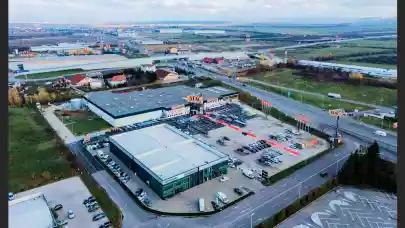
After a record-breaking year in 2023, when nearly 2.96 million sqm of industrial space had been in demand, the Czech industrial market has experienced a significant slowdown over the last year. Nevertheless, the first months of 2025 are suggesting a possible recovery, reports Cusman & Wakefield.
Interest in leasing industrial space reached a historic high in 2023, with a total volume of 2.96 million sqm, marking the highest level of demand since the modern industrial market began being tracked.
However, 2024 saw a significant cooling, with total demand dropping by nearly half to 1.91 million sqm. The decline was evident not only in the volume of space requested but also in the number of inquiries, which fell to just 281 compared to 444 the previous year.
Still, the first four months of this year bring hopeful signs, with nearly 200 new inquiries recorded for spaces totalling close to 900,000 sq m. The geographical structure of demand is also shifting, with traditional locations losing share in favour of regions offering better operating conditions and improved access to foreign markets.
“The drop in demand was caused by several factors, primarily the slowdown in the e-commerce segment, which is returning to normal after a rapid rise during the COVID period. Another factor is the weakening demand in neighbouring Germany, prompting companies to take a more cautious approach to expansion and development, maintaining greater flexibility in case of market fluctuations. Equally important is the slowdown in industrial production—particularly in the automotive sector—which has also played a significant role," explained Jiří Kristek, Head of the Industrial and Retail Warehousing Team at Cushman & Wakefield.
The structure of demand for industrial space remained relatively stable in 2024, with more than 70% of inquiries still coming from manufacturing and logistics companies, which continue to dominate the market. Compared to last year, there is a slight revival in demand from the retail and wholesale sectors, which are once again actively seeking suitable spaces. On the other hand, the e-commerce segment—which had been a major driver of demand in recent years—saw a year-on-year decline of 40% in 2024, reflecting broader consolidation within the sector.




